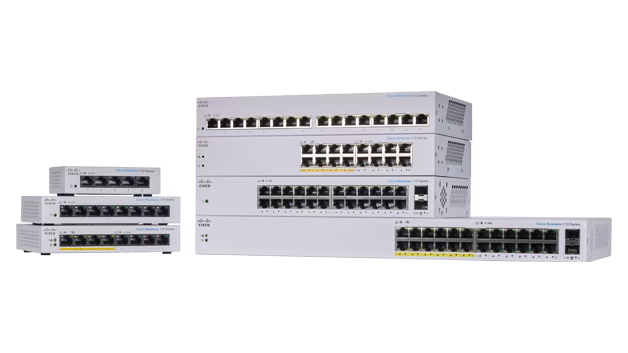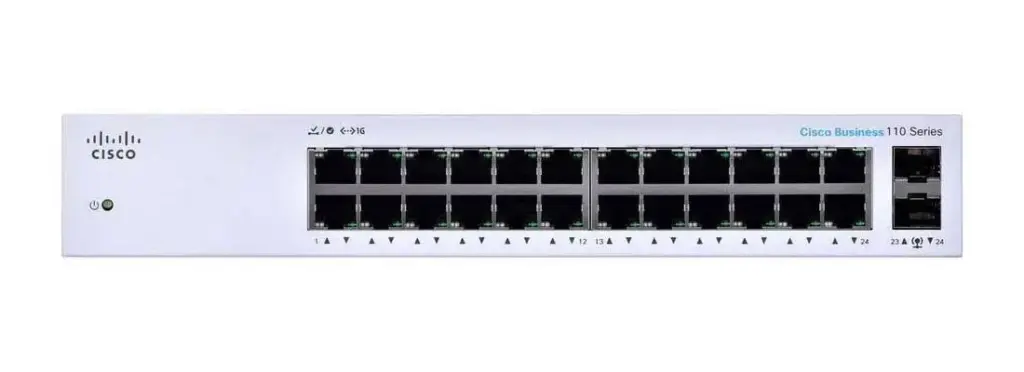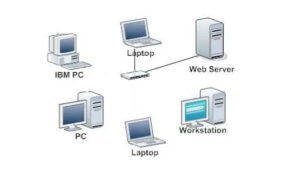Unmanaged Network Switches
In the dynamic world of networking technology, simplicity often trumps complexity, especially for small businesses and home offices. An unmanaged network switch offers a plug-and-play solution that immediately integrates into existing networks, enabling devices to communicate with each other seamlessly.
One of the most compelling advantages of an unmanaged network switch is its cost-effectiveness. Without the need for ongoing management or specialised IT skills, these switches reduce both initial investment and operational costs. They are ideal for setups where basic connectivity is required, without the bells and whistles of complex network configuration.
Moreover, unmanaged switches are known for their reliability and durability. With fewer moving parts and less complexity, they boast a lower likelihood of failure, ensuring a stable network environment. This reliability, combined with ease of use, makes unmanaged switches a preferred choice for many looking to establish a hassle-free network.
Do Cisco have an Unmanaged Switch?
The Cisco Business 110 Series Unmanaged Switches are affordable, plug-and-play entry-level switches that offer Gigabit Ethernet, Power over Ethernet (PoE), energy efficiency, and traffic prioritisation, ensuring a smooth digital transformation.
How to choose an unmanaged switch
To choose an unmanaged network switch, first assess the size and needs of your network, considering both current and future device connections. Select a switch with enough ports for all your devices, plus a few extra for growth.
Although smaller switches are available, you should bear in mind that one of the available ports will be used to connect to your router, so an 8-port Gigabit unmanaged switch is a good starting solution for home or small business needs.
Ensure the switch supports the required speed, such as Gigabit Ethernet for high-performance applications. Decide between desktop or rack-mount models based on your available space and setup. Look for energy-efficient features like Energy Efficient Ethernet to save on power costs. Consider advanced features like Quality of Service (QoS), loop detection, and cable diagnostics for better performance and troubleshooting. Choose a reputable brand known for reliability and good customer support, and balance these features with your budget to find the best value.
Is an unmanaged switch just a hub?
An unmanaged switch differs significantly from a hub, despite common misconceptions linking the two. Unmanaged switches and hubs both serve as connecting points for devices in a network, but they operate differently at the core technical level.
Firstly, an unmanaged switch creates separate collision domains for each connected device. This capability enhances network efficiency by reducing the probability of collisions, which commonly occur in a hub-based environment where all ports share a single collision domain. One will find that networks run smoother and more reliably on switches than on hubs, particularly in instances with heavy traffic.
Secondly, switches manage and maintain MAC address tables autonomously, allowing them to send data directly to intended recipient devices instead of broadcasting to all connected devices as hubs do. This selective sending minimises network congestion, improves security, and increases bandwidth availability for critical applications.
Moreover, despite their simplicity, unmanaged switches generally offer better performance in comparison to hubs. They support higher data transfer rates, ranging from 10 Mbps to 10 Gbps, whereas hubs typically support only up to 10 Mbps. This distinction allows devices connected via an unmanaged switch to interact and transfer data more rapidly, benefiting overall network performance, particularly in small businesses and home offices where bandwidth requirements are increasing.
Thus, while both devices appear similar in function—facilitating point-to-point communication within a network—the operational differences between an unmeshed switch and a hub are considerable, positioning the unmanaged switch as a more efficient and reliable option in various networking scenarios.
What is the purpose of an unmanaged switch?
An unmanaged switch serves a fundamental role in networking, especially suited to environments like small businesses and home offices that demand simplicity and reliability. Its primary purpose is to facilitate data communication between devices on a network by providing additional ports without requiring manual setup or configuration. Devices such as computers, printers, and servers connect directly to the unmanaged switch, enabling them to communicate with each other efficiently.
Unmanaged switches operate at the data link layer of the OSI model, handling data packets based on MAC addresses. They automatically determine the destination of the packets and forward them accordingly. This automatic operation ensures that the network runs smoothly without the need for continuous oversight, making it an ideal choice for networks where minimal management is preferable.
Unlike managed switches that require skilled personnel for setup and management, unmanaged switches eliminate these needs. This aspect makes them not only easier to install but also significantly reduces the total cost of ownership.
In essence, the unmanaged switch acts as the backbone of small scale networks, supporting daily operations by seamlessly connecting various devices, all while being easy to use, deploy, and maintain.
What is the downside of an unmanaged switch?
While unmanaged network switches offer numerous benefits like simplicity and cost-effectiveness, they come with certain limitations that may affect network performance and flexibility in specific scenarios. Here’s a detailed examination of the drawbacks associated with unmanaged switches:
Limited Configuration Options
Unmanaged switches operate with fixed configurations and do not allow any modifications to enhance network performance. This limited flexibility means that users cannot adjust settings such as Quality of Service (QoS), VLANs (Virtual Local Area Networks), or port mirroring, which can be crucial for optimising the network based on specific needs if the situation demands.
Unmanaged Switch Management
Unlike their managed counterparts, unmanaged switches lack the necessary tools for network management. This absence means there’s no built-in support for troubleshooting, monitoring, or managing network traffic. Consequently, diagnosing network issues or bottlenecks becomes more challenging, and monitoring tools must be installed separately, adding to the complexity.
Inability to Support Advanced Features
Unmanaged switches are designed for straightforward plug-and-play scenarios with no support for advanced features like Loop Prevention, network layer security, or traffic prioritisation. This can be a major disadvantage in environments where network demand is dynamic or where security and data handling requirements are higher.
Limited Scalability
As networks grow and become more complex, the initial benefits of unmanaged switches can turn into limitations. These switches do not support features like stackability or link aggregation, which can hinder scalability and the ability to expand network capacity efficiently without a significant overhaul or replacement of existing equipment.
Security Issues
An unmanaged switch is, by design, unsecured and could provide safe harbour for an intruder who can connect to the device. Modern networks that employ a secondary LAN security solution can mitigate this risk.
Unmanaged Switching - Pros and Cons
Pros of Unmanaged Network Switches
Unmanaged network switches offer several advantages for specific scenarios. Primarily, their plug-and-play nature makes them highly accessible. Users can integrate these switches into their networks without the necessity for complex configuration processes. This feature stands out, especially in environments like small offices or home setups, where technical resources are limited.
An often overlooked benefit of unmanaged switches is that with no firmware updates and no possibility of configuring or troubleshooting, they do not require any support other than a hardware warranty.
Additionally, unmanaged switches are cost-effective. They generally have lower price points compared to managed switches due to their simplicity and lack of advanced features. This cost advantage makes them an attractive option for small businesses looking to establish a reliable network on a budget.
Finally, the reliability of unmanaged network switches is notable. With fewer features to configure and potentially misconfigure, the chances of network errors are significantly reduced. This reliability is crucial in settings where consistent network performance is better than high-level management capabilities.
Cons of Unmanaged Network Switches
On the flip side, unmanaged switches come with several limitations. The primary concern is the lack of scalability. As small businesses grow, the demands on network infrastructure increase. Unmanaged switches do not offer the necessary features to scale up, such as VLANs, port mirroring, or link aggregation. This inability to expand with growing network needs can necessitate a costly replacement of hardware in the future.
Furthermore, these switches do not support advanced security protocols. In today’s cyber-threat landscape, security is a paramount concern. The absence of features like ACLs (Access Control Lists) and QoS (Quality of Service) adjustments means that networks are more vulnerable to attacks and performance issues.
Lastly, unmanaged switches offer no network management tools, which hampers troubleshooting and monitoring capabilities. In environments where network performance and maintenance are critical, the lack of these tools can become a significant drawback, affecting overall productivity and system uptime.
In a nutshell, while unmanaged network switches serve well in simple, small-scale setups, their disadvantages point to potential challenges in more complex or growing network environments.
Is a smart switch the same as an unmanaged switch?
Smart switches and unmanaged switches represent two distinct classes of network devices, each catering to different networking requirements and complexities. Understanding their differences clarifies their suitability for varying network environments.
Firstly, smart switches, also known as managed switches lite, occupy an intermediate position between managed and unmanaged switches. They provide a limited set of management features, allowing for a degree of customization that unmanaged switches lack. Users configure options such as Virtual LANs (VLANs), Quality of Service (QoS), and basic network monitoring with smart switches, enhancing network performance and security.
On the other hand, as highlighted earlier, unmanaged switches operate with a plug-and-play model, requiring no user configuration. These devices automatically forward data packets across the network using MAC addresses stored in their tables. The simplicity and ease of setup make unmanaged switches ideal for simple networks where there is no need for monitoring, network configuration, or enhanced security features that smart switches provide.
Additionally, smart switches typically come equipped with software that enables network administrators to monitor and manage network traffic more effectively. This capability is crucial in preventing network congestion and ensuring data flows efficiently across the network, tasks that unmanaged switches cannot perform due to their lack of advanced features.
Although both serve the fundamental purpose of data packet forwarding in a network, smart switches offer more control over network traffic, making them better suited for businesses that might expand or require higher security and performance levels. In contrast, unmanaged switches remain a cost-effective solution for smaller setups that demand minimal management.
Unmanaged Switch FAQ
What are the benefits of using unmanaged network switches?
Unmanaged network switches are valued for their simplicity, cost-effectiveness, and reliability, making them ideal for small businesses and home offices. They require minimal setup, automatically connect devices, and manage data flow without user intervention.
How do unmanaged switches differ from hubs?
Unlike hubs, unmanaged switches create separate collision domains for each connected device, which significantly reduces network traffic issues and improves performance. They also autonomously manage MAC address tables, enhancing data transmission efficiency.
What are the limitations of unmanaged switches?
The primary limitation of unmanaged switches is their lack of configuration options, which restricts the ability to enhance network performance or implement advanced security protocols and network configurations.
What is a smart switch?
A smart switch, situated between managed and unmanaged switches, offers limited management features like VLANs and Quality of Service (QoS). These features improve network performance and security but with less complexity and cost compared to fully managed switches.
How can you identify an unmanaged switch?
An unmanaged switch can generally be identified by the absence of an IP interface, lack of configuration settings, fixed configurations, specific manufacturer labelling, particular physical characteristics, and often lower cost compared to managed switches.






